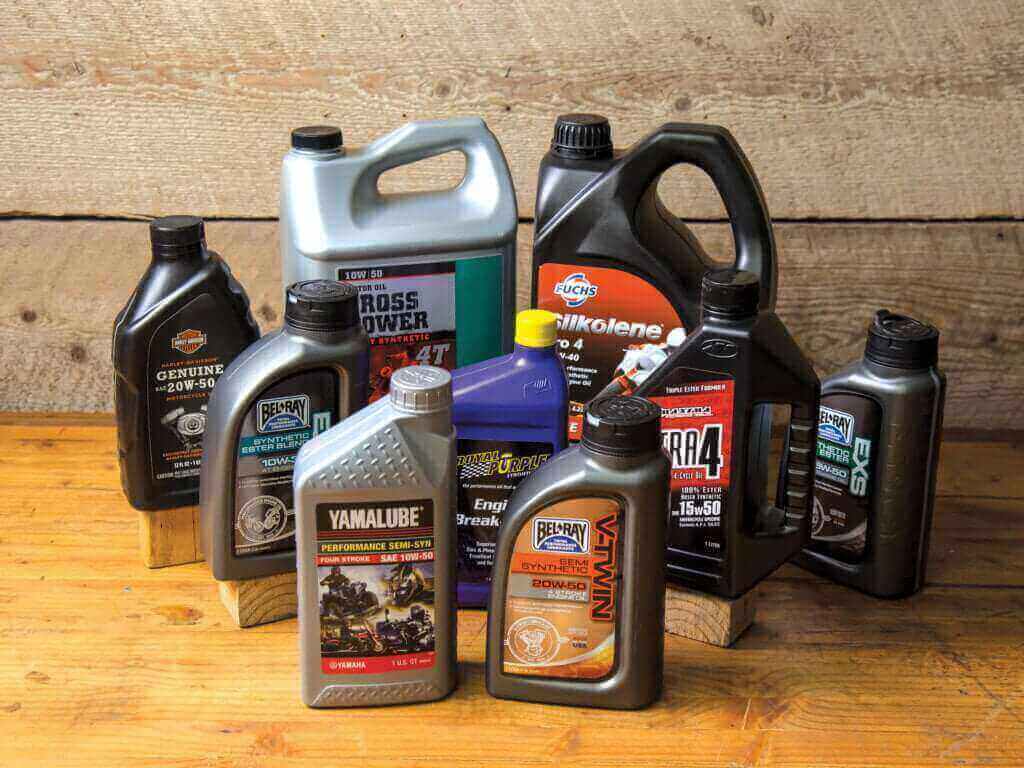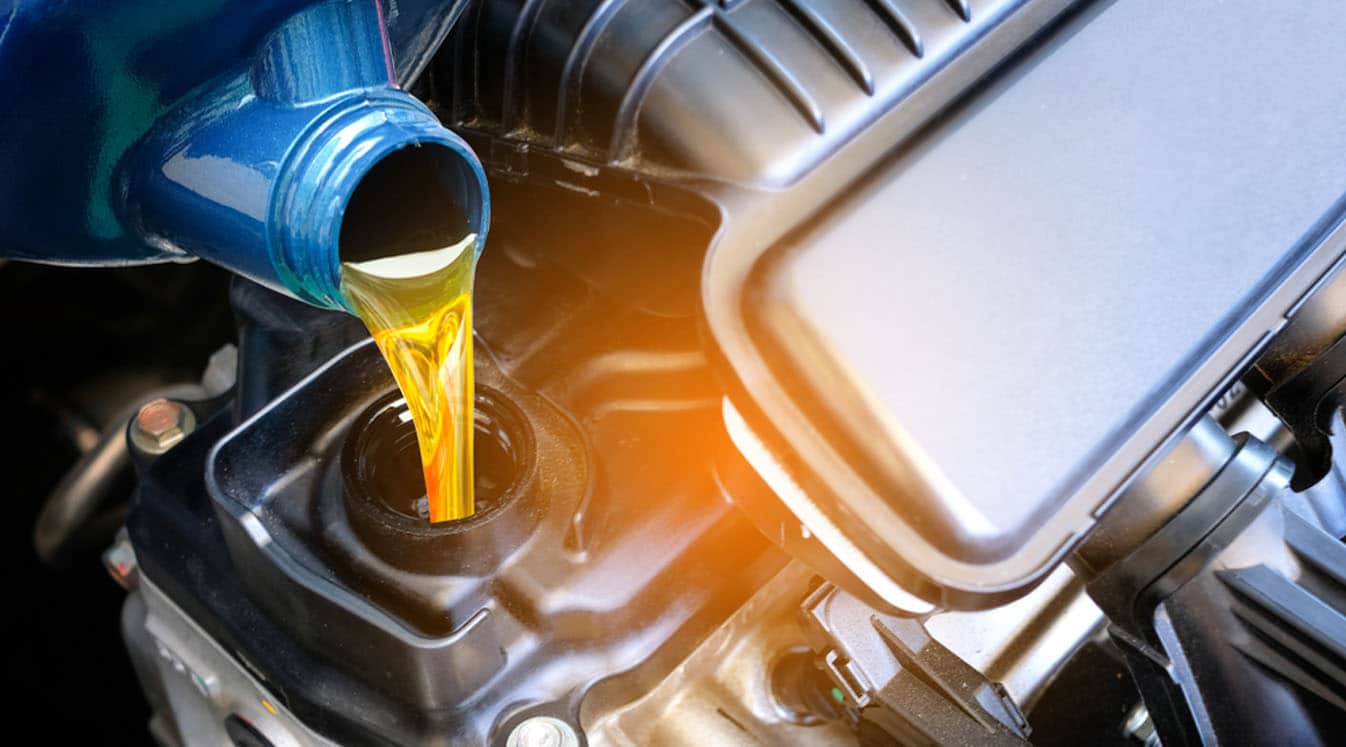In the world of motorcycles, the importance of choosing the right oil cannot be overstated. Just as our bodies rely on blood to function, your motorcycle’s engine depends on oil to operate efficiently and stay healthy. In this comprehensive guide, we’ll explore the crucial role of oil in motorcycles, dive into the various additives found in oil, guide you through the process of selecting the best oil for your bike, and offer essential tips on oil maintenance and changes. Whether you’re a seasoned rider or just starting out, this guide will help you make informed decisions about one of the most critical aspects of motorcycle ownership.

The Vital Role of Oil in Motorcycles
To truly appreciate the importance of oil in motorcycles, it’s essential to delve deeper into the intricate and critical functions that oil performs within your bike’s engine. Consider motorcycle oil as the lifeblood of your ride, flowing through the heart of your engine to keep it running smoothly and efficiently.
1. Lubrication: The most fundamental function of oil in a motorcycle engine is lubrication. Imagine the myriad of moving parts within your engine, such as pistons, crankshafts, and camshafts, all working in unison at incredibly high speeds. Without proper lubrication, the friction between these components would be excessive, leading to rapid wear and tear. Motorcycle oil forms a protective film between these moving parts, significantly reducing friction and wear. This ensures that your engine runs smoothly, extends its lifespan, and maintains its performance over time.
2. Cooling: As your motorcycle’s engine operates, it generates an immense amount of heat. Without effective cooling, this heat would reach critical levels, leading to overheating and potential engine damage. Motorcycle oil plays a vital role in cooling the engine by absorbing and carrying away excess heat from various components. It acts as a heat transfer medium, helping to maintain optimal operating temperatures and preventing overheating during long rides or high-speed runs.
3. Cleaning: Engines are not immune to the accumulation of dirt, debris, and contaminants over time. If left unchecked, these particles can create harmful deposits that hinder engine performance and efficiency. Motorcycle oil acts as a cleaning agent, capturing these contaminants and carrying them away from critical engine components. It essentially flushes out impurities, ensuring that the engine remains clean and free from harmful buildup.
4. Sealing: Within your engine, there are numerous seals and gaskets that help maintain proper compression and prevent oil leaks. Motorcycle oil contributes to the longevity and effectiveness of these seals by forming a protective film around them. This film helps maintain a proper seal, preventing oil from escaping and maintaining compression, which is crucial for engine power and efficiency.
5. Noise Reduction: Engines can be noisy affairs, with various components moving and interacting rapidly. Motorcycle oil has another valuable function in dampening engine noise. It helps reduce the clattering and rattling sounds that can be produced by moving parts, contributing to a quieter and more enjoyable riding experience.
In essence, motorcycle oil is the unsung hero of your bike’s engine, performing a multitude of critical tasks that are often taken for granted. It ensures that your engine operates smoothly, remains at the right temperature, stays clean, maintains proper compression, and even contributes to a quieter ride. Understanding the vital role of oil in your motorcycle is the first step in appreciating the significance of selecting the right oil and maintaining it properly for countless miles of worry-free riding adventures.
Understanding Oil Additives
Let’s delve deeper into the world of oil additives and understand how they enhance the performance of motorcycle oil.
Viscosity Index Improvers: These additives are responsible for ensuring that the oil maintains its viscosity across a wide range of temperatures. In simple terms, viscosity refers to the oil’s thickness or resistance to flow. A lower viscosity oil flows more easily, while a higher viscosity oil is thicker and flows less easily. Motorcycle engines operate under various temperature conditions, from cold starts in the morning to hot summer rides. Viscosity index improvers help the oil remain stable, ensuring that it flows adequately when cold (e.g., during startup) and maintains its thickness when hot (e.g., under high engine load). This ensures consistent lubrication regardless of temperature fluctuations.
Detergents and Dispersants: These additives work hand in hand to keep the engine clean. Detergents are responsible for preventing deposits, sludge, and varnish from forming on critical engine components. They suspend contaminants, preventing them from adhering to engine surfaces. Dispersants, on the other hand, prevent these contaminants from agglomerating or clumping together. Instead, they are held in suspension in the oil, allowing them to be effectively carried away and trapped by the oil filter. These additives ensure that your engine stays clean and free from harmful deposits that can hinder performance and longevity.
Anti-Wear Agents: Motorcycle engines contain many moving parts that interact with each other at high speeds and under heavy loads. To prevent excessive wear and tear, anti-wear agents are added to the oil. These additives form a protective barrier on metal surfaces, reducing friction and minimizing wear. They act as a safeguard, ensuring that critical engine components, such as pistons, bearings, and camshafts, remain in good condition for an extended period. Anti-wear agents are especially crucial in high-performance engines subjected to intense stress.
Anti-Foaming Agents: When oil foams, it can lose its ability to properly lubricate and cool engine components. Anti-foaming agents are incorporated into motorcycle oil to reduce the formation of foam. This ensures that the oil remains stable and capable of effectively carrying out its lubrication and cooling functions. Foaming can occur under high-rev situations or when the oil is subjected to mechanical agitation, and anti-foaming additives help maintain oil integrity.
Corrosion Inhibitors: Motorcycle engines are exposed to various environmental conditions, including moisture and humidity, which can lead to corrosion. Corrosion inhibitors are added to the oil to protect engine components from rust and corrosion. These additives create a protective film on metal surfaces, preventing them from reacting with moisture or other corrosive elements. This helps prolong the life of critical engine parts, especially in regions with harsh weather conditions.
Friction Modifiers: Reducing friction is crucial for both engine efficiency and fuel economy. Friction modifiers are additives that help minimize friction between moving parts. By doing so, they improve fuel efficiency and reduce energy losses within the engine. This can lead to better mileage and increased engine performance.
Oil additives go beyond basic lubrication; they are a sophisticated blend of carefully chosen components designed to optimize engine performance, extend engine life, and provide consistent protection across varying conditions. When selecting motorcycle oil, paying attention to these additives and their benefits can help you choose the right oil for your bike’s specific needs.
Selecting the Best Oil for Your Motorcycle
Choosing the right oil for your motorcycle depends on various factors:
Certainly, let’s delve deeper into the factors to consider when selecting the best oil for your motorcycle, ensuring that it’s tailored to meet your bike’s specific needs:
1. Motorcycle Type: Different types of motorcycles have varying demands on their engine oil. Consider your bike’s category, whether it’s a sportbike, cruiser, touring bike, or off-road machine. Each type may have unique requirements. Sportbikes, for example, may benefit from high-performance synthetic oils that offer exceptional protection under high-stress conditions. Cruisers, on the other hand, might be well-suited to conventional oils.
2. Manufacturer Recommendations: Your motorcycle’s manufacturer knows your bike best. Consult your owner’s manual for their recommended oil specifications and viscosity grades. They often provide clear guidelines on the type of oil that is ideal for your specific make and model. Following their recommendations ensures that your engine receives the oil it was designed for.

3. Viscosity: The viscosity rating on oil containers, such as 10W-40 or 20W-50, is a critical factor. The “W” stands for winter, and it indicates the oil’s flow characteristics at low temperatures. The first number (e.g., 10W) represents the cold viscosity rating, while the second number (e.g., 40) represents the hot viscosity rating. Choose the viscosity based on your bike’s requirements and the climate in which you ride. For colder temperatures, you might opt for a lower first number (e.g., 5W), while hotter climates might necessitate a higher second number (e.g., 50).
4. Synthetic vs. Conventional: Synthetic oils offer superior performance and protection compared to conventional oils. They are highly refined and engineered to withstand extreme conditions. If you own a high-performance motorcycle or engage in intense riding, synthetic oil might be the best choice. However, it’s essential to follow your manufacturer’s recommendations, as some bikes may require conventional oil.
5. Oil Standards: Look for oils that meet industry standards like JASO (Japanese Automotive Standards Organization) or API (American Petroleum Institute) classifications. These standards ensure that the oil meets specific quality and performance benchmarks. For example, JASO MA and MA2 are standards for motorcycle engine oils, with MA2 indicating improved friction properties suitable for wet-clutch applications.
6. Riding Conditions: Consider the conditions in which you primarily ride. If you frequently ride in stop-and-go traffic or endure heavy traffic congestion, your engine might benefit from an oil formulated with additional additives to handle these conditions. Similarly, if you’re an off-road enthusiast, you might require an oil designed to withstand dust and debris.
7. Budget: While it’s tempting to opt for the most expensive oil, it’s essential to find a balance between your bike’s needs and your budget. Premium synthetic oils can be more expensive, but they also provide superior protection. However, if your bike’s usage is relatively light, a quality conventional oil may suffice and be more budget-friendly.
8. Oil Change Interval: Consider how often you’re willing to perform oil changes. Synthetic oils often have longer change intervals, which can save you time and money in the long run. Conventional oils may require more frequent changes, but they can be cost-effective.
Ultimately, the best oil for your motorcycle will align with your bike’s specifications, your riding style, and the climate in which you operate. By carefully evaluating these factors and consulting your owner’s manual, you can make an informed choice that ensures your engine receives the right oil for optimal performance, longevity, and protection. Remember that selecting the right oil is an investment in your motorcycle’s health and performance, so choose wisely.

Tips for Motorcycle Oil Maintenance and Changes
Proper oil maintenance is essential for the longevity and performance of your motorcycle’s engine. Here are some tips for when you service your motorcycle:
Regular Oil Changes: Follow the manufacturer’s recommended oil change intervals. Typically, this is every 3,000 to 6,000 miles, but it can vary by motorcycle and oil type.
Check Oil Levels: Regularly check your oil levels using the dipstick or sight glass. Maintain oil levels within the recommended range.
Filter Changes: Replace the oil filter at each oil change. A clogged filter can impede oil flow and reduce lubrication.
Oil Type Consistency: Stick to one type of oil (synthetic or conventional) unless your owner’s manual specifies otherwise. Mixing oil types can result in performance issues.
Warm-Up Your Engine: Warm up your motorcycle’s engine before changing the oil. Warm oil flows more freely, ensuring that you remove more old oil during the change.
Dispose of Used Oil Properly: Dispose of used oil in an environmentally friendly manner. Many auto parts stores accept used oil for recycling.
Oil Analysis: For advanced users, consider oil analysis services that can provide insights into engine health based on oil condition.
In conclusion, motorcycle oil is the lifeblood of your ride, and understanding its functions, additives, and how to choose the right one is essential. Proper maintenance, regular oil changes, and adherence to manufacturer recommendations will keep your engine running smoothly and reliably for countless miles of thrilling adventures. So, treat your bike’s engine with the care it deserves, and it will reward you with years of enjoyable riding experiences.

